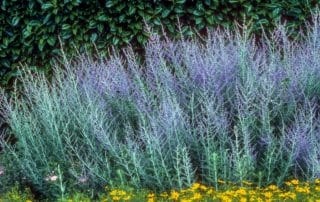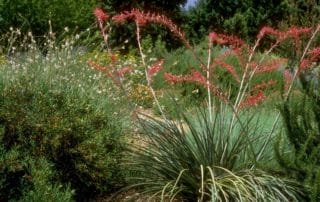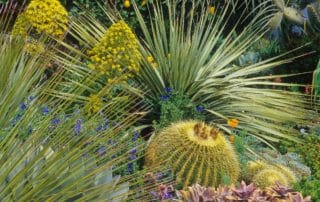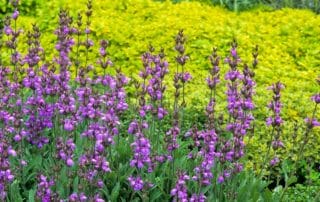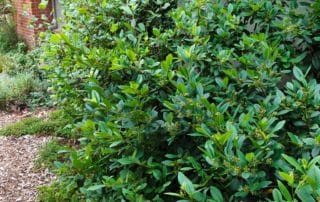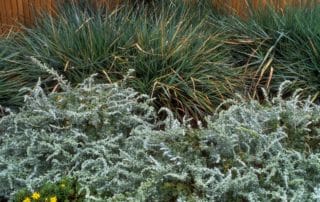Descriptions with photos of garden plants suitable for summer-dry gardens.
Perovskia
Perovskia atriplicifolia Russian sage (Perovskia atriplicifolia) is a deciduous woody perennial or subshrub with strongly scented gray-green leaves, silvery gray mostly upright stems, and masses of tiny lavender-blue to deep blue flowers on tall spikes from summer through fall. A fine-textured plant two or three feet tall and wide with an open, airy habit, perovskia is content in full sun with only occasional deep summer watering. It thrives in almost any soil type, including clay, but must have decent drainage; it sulks and rots where drainage is poor, especially in rainy winters. Native to rocky steppes of southwestern


